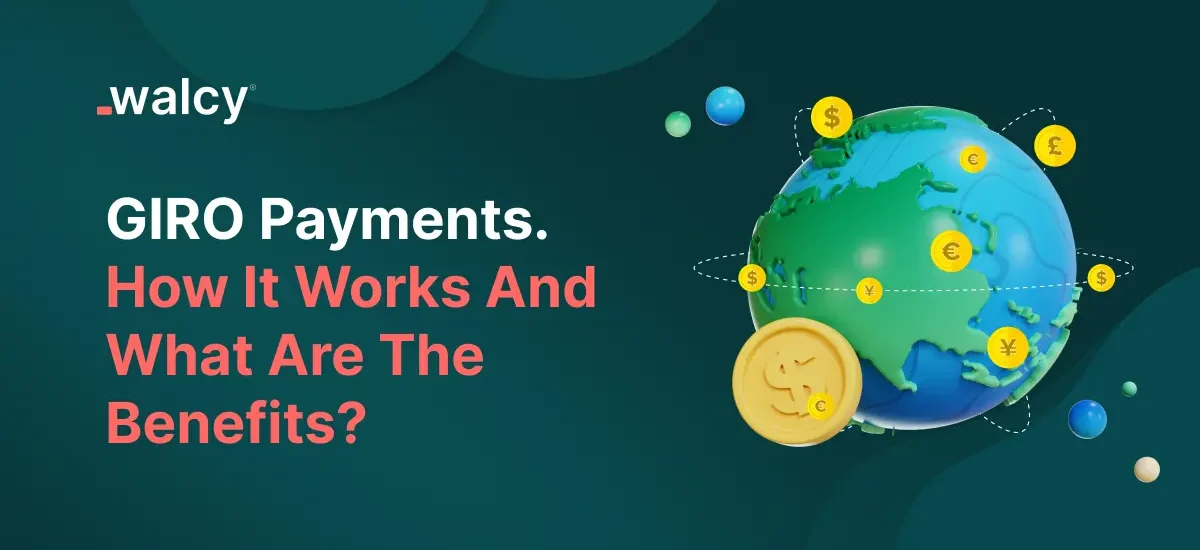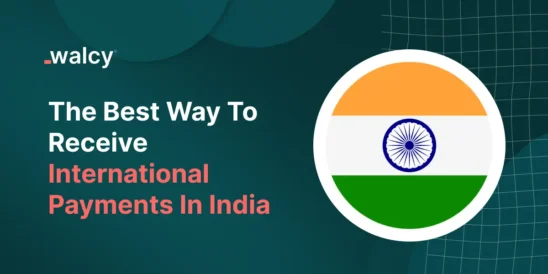If you require a paperless and cashless payment method, GIRO (General Interbank Recurring Order) is a reliable and hassle-free payment method that can be made via your bank account in Singapore for recurring payments. It is an automated payment system for settling recurring payments to selected billing organizations. GIRO Payment facilitates prompt and timely bill payment; since there are no expiry dates for GIRO arrangements or fees for setting up a GIRO arrangement, it is even more convenient, and minimal set-up effort is needed initially.
What is GIRO?
To define GIRO, it is an automated electronic payment service where the recurring payment is credited from one’s Singaporean bank account and debited to the desired billing organization based on the GIRO arrangement. Furthermore, in the case of insufficient funds during GIRO payments, the payer will be charged an SGD 10 fine.
It is a 3-way relationship between you, the billing organization, and the bank. The bank is the facilitator for making payments for recurring payments, and as per the billing organization’s request bank deducts the amount from your account.
What are Recurring Payments?
Any payments that you make on a specific timeframe like bimonthly, weekly, or monthly are called recurring since they are due after a uniform timeframe. Utility bills, subscription charges, payrolls, and supplier payments are some examples of recurring bills. It saves time, increases convenience, and is easy to set up. Therefore, it is a preferred payment method over manual due payment resolution.
What Is A Billing Organization In GIRO?
The entity or organization that initiates the automatic payment of recurring payments or collections is called a billing organization. A billing organization is typically a business entity, utility provider, or other organization that needs regular payments from its customers. Examples of billing organizations include telco companies, insurance companies, and government agencies.
What Are Billing Arrangements?
When customers set up GIRO arrangements with the desired billing organization to authorize automatic deductions from their Singaporean bank accounts for recurring payments. One of the requisites is that the billing organization submits payment instructions to the bank, which then processes the transactions on the specified dates. As a result, it ensures that payments are made on time without delay and the need for manual intervention.
How To Set Up GIRO Arrangements?
Identify the billing organization with whom you want to set up the GIRO arrangement.
Fill out the necessary GIRO application form. Most online digital banks provide GIRO application options through a web application or mobile application. Usually, the application form requires personal information (NRIC/FIN number), bank account details, billing organization details, and an authentic signature.
Submit the form via one of the following methods: mail it directly to the billing organization, submit it to the billing organization’s customer service center, or submit it via your bank.
Wait for the approval process, which can take up to 14 days, as the bank will verify the customer’s details.
Monitor your email or SMS notifications for GIRO payments or deductions in your bank account.
What Are The Different Types Of GIRO Limits?
Most limits are imposed by banks, followed by the billing organization and the account holder themselves. Usually, there are five types of GIRO limits:
- Transaction Limits:
This can either be a per transaction limit that can be deducted per GIRO transaction or a daily limit on GIRO transactions in a single day. These limits are usually controlled by the banks providing GIRO services, less so by the billing organization.
- Frequency Limits:
To prevent over commitment of funds, there can be a limit on the number of transactions and the frequency of deductions.
- Account Limits:
Most banks require a minimum account balance to be maintained to allow GIRO transactions. Additionally, for overdraft protection, there can be limits on how much can be overdrawn.
- Billing Organization Limits:
They can set limits on how much can be deducted via GIRO to mitigate excessive payments, and they can also cap the number of accounts that can be linked to a single GIRO arrangement.
- MAS Regulations:
As of now, there are no limitations from the Monetary Authority of Singapore for limits on GIRO payments; however, MAS may impose certain limits or guidelines that financial organizations must follow.
How GIRO Transfer Works
Initially, the Initiation and Authorization are carried out, and the customer who we can consider a payer authorizes the billing organization which is the payee to debit their bank account regularly. The primary requisite is that the payer completes a GIRO application form provided by the payee, which includes details such as the payer’s bank account information, the amount to be debited, and the frequency of the payments. Then, the completed form is submitted to the billing organization, which then forwards it to the payer’s bank for processing.
Subsequently, the Bank Verification process is initiated where the payer’s bank verifies the details provided in the GIRO application form. Ensuring that the account number is correct, the bank account has sufficient funds, and the signature matches the one on record is included. Finally, once verified, the bank sets up the GIRO arrangement in its system and notifies the billing organization of the approval.
On the day of payment, the billing organization requests the payer’s bank for payment, after receiving this request the bank then debits the amount from the payee’s account and initiates a transfer to the billing organization’s bank. Both the payer and the billing organization should receive notifications via transaction alerts or emails.
In some cases, the funds might be insufficient, and the bank may reattempt to deduct the payment. However, in the case of failed payments, the bank might levy penalties on the cancellation of the GIRO arrangement.
If there is a need for Cancellation or Amendments of the GIRO arrangement, the payer can cancel or amend the GIRO arrangement by notifying both their bank and the billing organization.
How to Cancel a GIRO Arrangement
Cancelling a GIRO arrangement involves a few straightforward steps:
- Identify the specific payment you want to stop (e.g., utility bills, insurance).
- Contact your bank to initiate the cancellation process for the GIRO arrangement. This can usually be done through either of the options i.e., online banking, visiting a bank branch, or contacting customer service.
- Provide the necessary details like the GIRO reference number and the billing organization, and inform the relevant billing organization about the cancellation to avoid payment issues.
- Confirm the cancellation with both your bank and the billing organization, and monitor your bank statements for a few months to ensure the GIRO has been successfully stopped.
Benefits Of GIRO payments
Since GIRO payment is a three-way relationship between the consumer, billing organization, and bank, each gets their share of benefits.
Benefits For Consumers
- Convenience:
When GIRO payments are set up, they automatically fulfill the payment needs. Moreover, it eliminates the need for manual payment for recurring payments. With GIRO payment you are less likely to miss payment due dates, avoiding late fees and mitigating service disruptions due to outstanding payments.
- Time-saving:
Since automating recurring payments reduces the time spent on making particular payments for various bills, there are fewer transactions.
- Single Setup:
Furthermore, the GIRO arrangement is a one-time setup that saves time in the long run compared to making manual payments repeatedly.
- Cost-Effective:
Since digital banks offer GIRO transactions without extra charges, it’s an economical way to make payments. In addition, timely automated payments save expenses by preventing late penalties and disruptions to service.
- Improved Financial Management:
Scheduled payments become predictable, helping the users to better handle their cash flow and budgeting processes. There is consistent record keeping and automatic payments that exist in bank records, providing a clear and consistent record for financial tracking and reconciliation.
Since we are transacting paperlessly, we also reduce the number of papers and help the environment.
Benefits For Billing Organizations
- Improved Cash Flow:
Since the amount is automatically deducted on time the organization’s cash flow is traceable and stable. This in return reduces the payment delay for the billing organization.
- Reduced Administrative Overhead:
Since we mitigate the manual task of managing individual payments the administrative overhead is greatly reduced. The automation also results in fewer payment errors and outstanding receivables for the billing organization.
- Cost Savings:
One evident fact is that electronic payments are cheaper since they reduce the cost associated with manual cheque processing, handling, and mailing invoices. Since we also have less manual work, the labor costs are low and the possibility of human-prone error is greatly reduced.
- Customer Convenience:
Customer convenience is increased which in return enhances customer satisfaction as GIRO as a payment option provides added convenience for customers. This notion of convenience is reflected as a positive word of mouth for the billing organization.
Benefits For Banks
- Increased Customer Engagement:
As a part of a comprehensive service offering GIRO should be included and it can enhance customer satisfaction, loyalty, and regular interactions with the bank. This in return helps the bank to maintain a great relationship with customers.
- Operational Efficiency:
Automation helps reduce operational overhead, and enhance efficiency as there is no need for manual processing.
- Cost Savings:
Similar to billing organizations banks also have a major reduction in transaction processing costs which is an alternative to paper-based transaction processing. It reduces the need for manual intervention in processing the recurring bills, decreasing workforce costs and reducing human error.
Delinquent payment rates are greatly reduced, and credit management is more optimal since predictable payment patterns allow banks to effectively maintain customers’ portfolios.
- Enhanced Account Stickiness:
The likelihood of switching banks is greatly reduced since the customer is consistently interacting with the bank and the promptness improves the customer’s perception towards the bank.
Giro transaction information provides a wealth of information on spending patterns and purchase behavior, this can be utilized by marketing teams or the data can be useful for personalized service offerings. Need analysis of customers can also be performed based on the GIRO transaction.
Conclusion
In essence, GIRO payment simplifies your financial life by automating your recurring bills. The chances of missing a bill payment, the number of outstanding bills, the penalty of late fees, and service disruption are greatly reduced. It is akin to having a personal financial advisor who ensures that your bills are paid on time.
For businesses, GIRO payment is a game-changing payment processing system that ensures timely payments, improves cash flow, and reduces administrative overhead. This renders firms more focused on providing quality services and less on fulfilling payments. Moreover, the convenience and reliability of GIRO can be co-related with enhanced customer satisfaction and loyalty to the bank.
In a world that’s increasingly opting for digital automation, embracing GIRO is a step towards a more efficient, eco-friendly, and stress-free way of managing finances.
Know everything about overseas payment | Know about B2B payments | Know about Swift Payment Network.
Do follow us on Facebook and LinkedIn, to stay connected with us.



